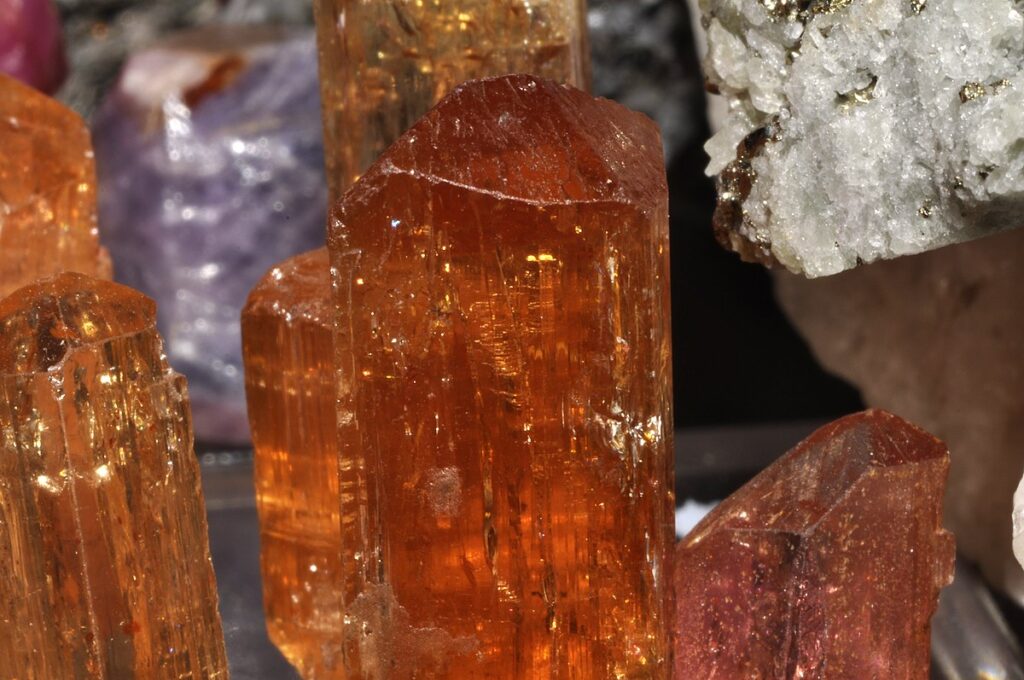
Topaz is a rare silicate mineral, and one of the hardest naturally occurring minerals in the world. It is also one of the most popular gemstones around, due in no small part to the wide variety of colors it can be found in. While Topaz is normally clear or colorless, certain conditions can cause it to form in pale greys or greens, wine reds, sunset pinks or oranges, bright yellows and golds, golden-browns, as well as beautiful blues.
All colors of topaz are highly valued, but among the rarest and most sought is Imperial Topaz – which generally refers to the sunset-like pinks, yellows, oranges, or reds – and blue topaz, which is sometimes referred to as Brazilian Aquamarine or Royal Aquamarine.
Because the most prevalent form of topaz is the clear variety, it is common to find jewelers selling treated topaz which, through heating, radiation, or other means, has been “dyed” to look like the more colorful varieties. Colorless topaz tends to be turned into a dark blue color, while brown and pale topazes are sometimes altered to give them brighter pink, gold, yellow, gold, or even violet hues. While these color-treated topazes can be quite eye-catching, it is important to know that they are not as rare or valuable as naturally occurring colored stones.
If you’re unsure whether a colored stone is the real deal or has been treated, you would do well to consult a gemologist before committing to making a purchase. In fact, the massive array of both natural and artificially colored topazes can sometimes cause it to be confused with other gems entirely, so you may even want to consider asking an expert whether what you have on your hands is really even topaz at all!
Topaz deposits can be found all across the globe, and the gem’s popularity has been noted throughout much of recorded history. It is known to have been used for ornamental purposes in Egypt as far back as the 16th century BC, though it is quite possible that miners were digging the gemstone up well before then.
Today, Brazil is home to some of the largest and most actively mined topaz deposits. In these mines, some clear varieties of the stone have even been known to reach the size of boulders and weigh hundreds of pounds! Other significant mining deposits can be found in countries on every continent except Australia and Antarctica.
In the US, Utah recognizes Topaz as its state gemstone; Texas considers, more specifically, blue topaz as its state gemstone. It is also considered to be the birthstone of November, with orange varieties most commonly associated with the month.
While the gem is resistant to scratching due its hardness, it can still cleave due to a comparatively weak atomic structure, so you should be mindful not to accidentally strike or smack it with too much force, especially when wearing topaz as a piece of jewelry.
